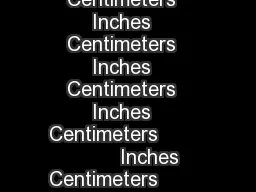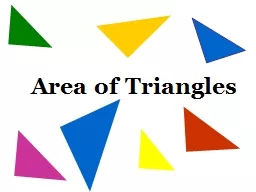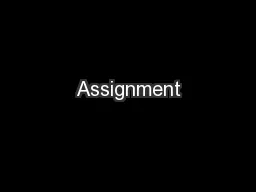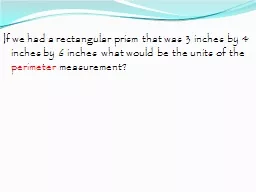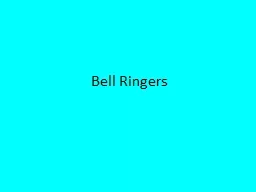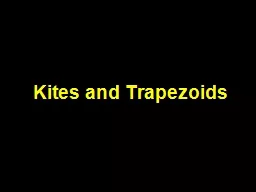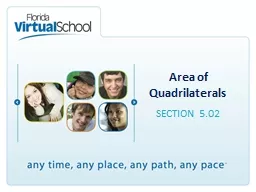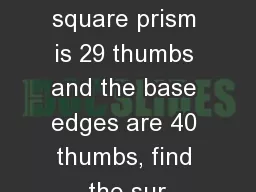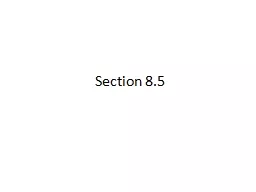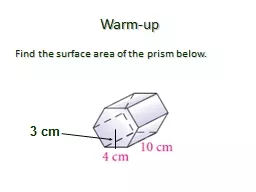PPT-Bell Work: Find the area of a trapezoid with bases that measure 3 inches and 7 inches
Author : kittie-lecroy | Published Date : 2018-03-08
Answer 20 inches squared Lesson 76 Volumes of Prisms and Cylinders In lesson 42 we found the volume of a rectangular solid by first calculating the area of the base
Presentation Embed Code
Download Presentation
Download Presentation The PPT/PDF document "Bell Work: Find the area of a trapezoid ..." is the property of its rightful owner. Permission is granted to download and print the materials on this website for personal, non-commercial use only, and to display it on your personal computer provided you do not modify the materials and that you retain all copyright notices contained in the materials. By downloading content from our website, you accept the terms of this agreement.
Bell Work: Find the area of a trapezoid with bases that measure 3 inches and 7 inches: Transcript
Download Rules Of Document
"Bell Work: Find the area of a trapezoid with bases that measure 3 inches and 7 inches"The content belongs to its owner. You may download and print it for personal use, without modification, and keep all copyright notices. By downloading, you agree to these terms.
Related Documents


